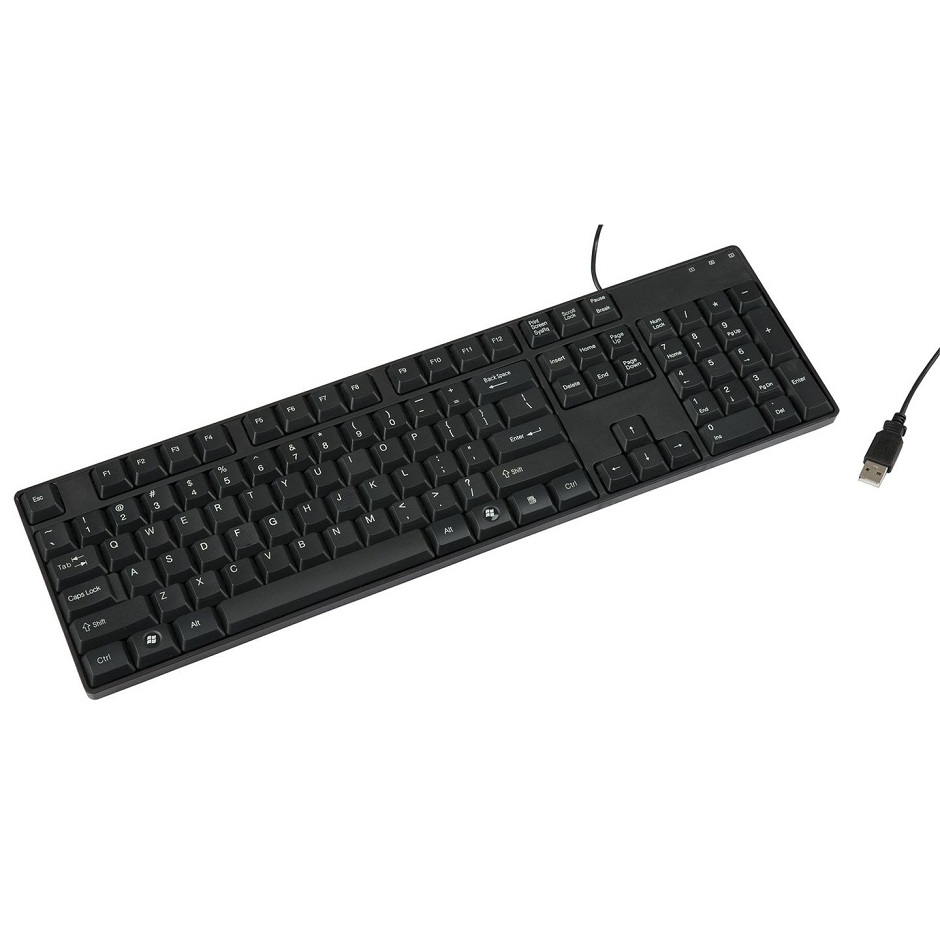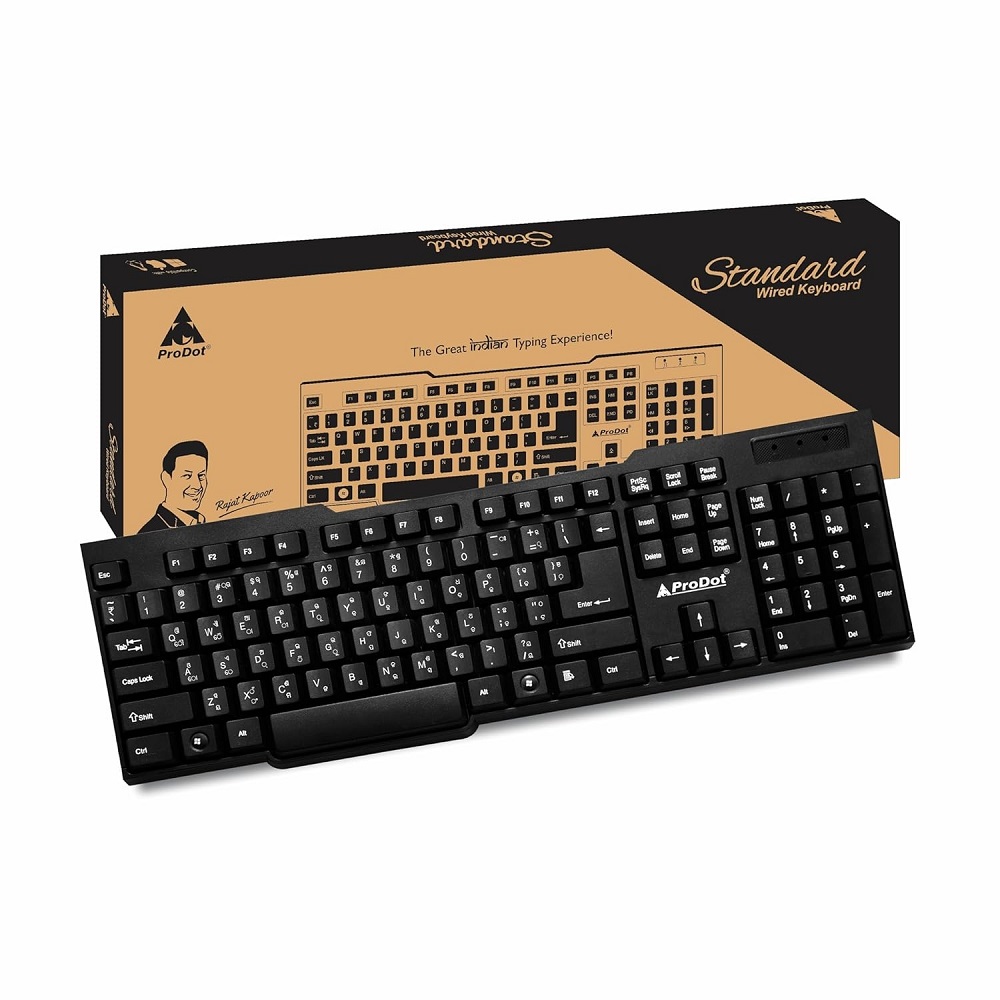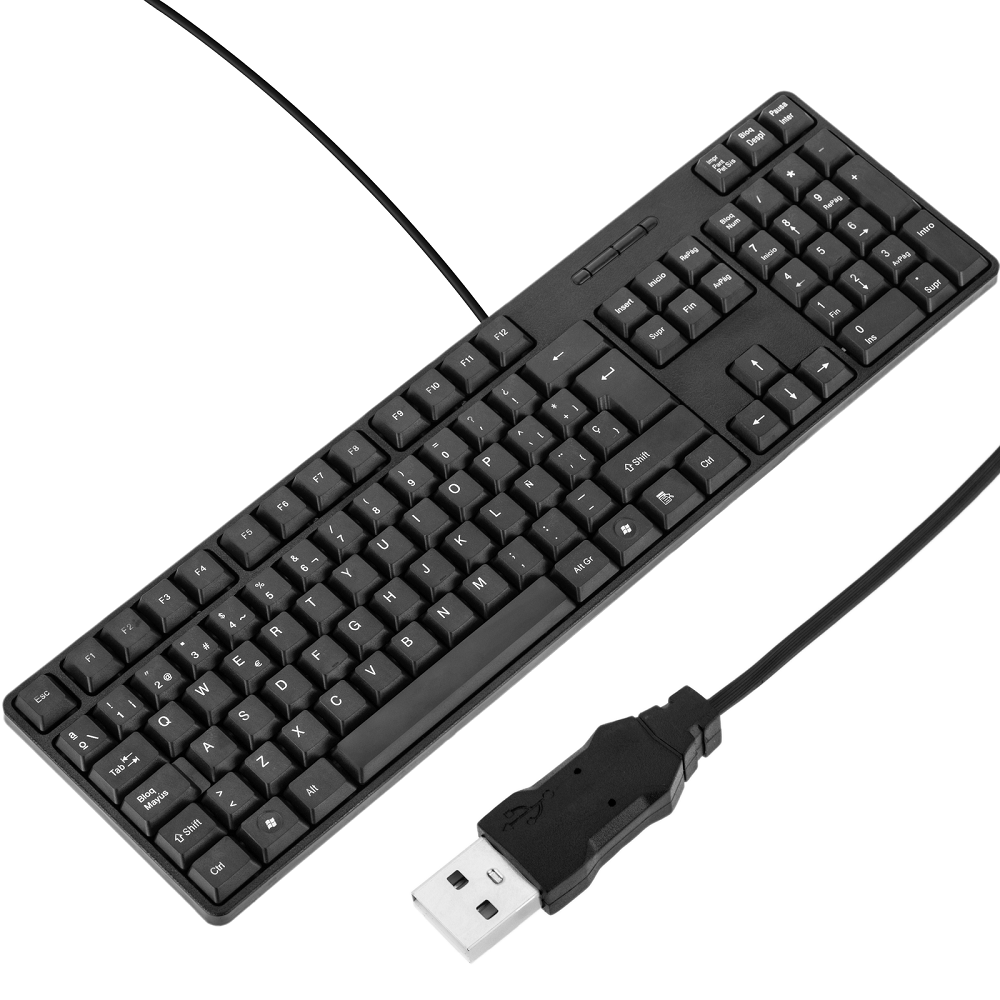introduction
The QWERTY keyboard is the standard keyboard layout used by millions of people around the world. Its unique arrangement of letters defines how we interact with computers, tablets, and smartphones. Understanding its origins reveals much about how technology has evolved. In this article, we will explore the QWERTY keyboard in detail. We will cover its history, how it works, various adaptations, and some alternatives. This comprehensive overview offers a complete picture of the QWERTY keyboard.
The History of the QWERTY Keyboard
The Birth of the QWERTY Layout
The QWERTY keyboard design was invented in the 1870s by Christopher Latham Sholes. He was a newspaper editor and printer who sought a practical solution to a pressing problem: jammed typewriters. At that time, typewriters had keys that struck inked ribbons to print letters on paper. How the keys were arranged affected how often they jammed. The QWERTY design aimed to space out frequently used letter combinations to minimize jamming.
Sholes initially experimented with several layouts. He tried different arrangements before settling on the QWERTY format. He filed for a patent in 1868, and the first commercial typewriter featuring the QWERTY layout was produced by E. Remington and Sons in 1873. This model, known as the Sholes and Glidden typewriter, was the first to be mass-produced. It marked the beginning of the widespread acceptance of the QWERTY layout.
The Impact of the QWERTY Keyboard on Society
The introduction of the QWERTY layout revolutionized how people wrote. It allowed for faster typing speeds because it reduced the number of jams that typists experienced. The design helped streamline office work, which became increasingly common in the industrial age. With greater efficiency came the need for more skilled typists.
As typewriters grew in popularity, schools and businesses adopted the QWERTY keyboard as a standard. This widespread use solidified the QWERTY layout’s place in society. Once people learned to type using QWERTY, it became challenging to switch to another layout. The learning curve for a new keyboard design can be steep, leading to a strong preference for QWERTY.
Early Alternatives to QWERTY
Despite its rapid ascent to popularity, the QWERTY layout faced competition from other keyboard designs. For instance, the Dvorak Simplified Keyboard emerged in the 1930s as an alternative. Designed by August Dvorak and his brother-in-law William Dealey, this keyboard aimed to increase typing speed and reduce finger movement. It placed the most common letters under the strongest fingers, theoretically improving efficiency.
While the Dvorak layout has its proponents, it never matched QWERTY’s popularity. Most people were reluctant to change their habits. By the time Dvorak was introduced, most typists were already trained on QWERTY keyboards. Thus, the alternative’s appeal faded over the years. Switching from an established standard represents both a practical and emotional challenge. Many people prefer the familiarity of QWERTY to the purported benefits of alternative layouts.
How the QWERTY Keyboard Works
The Mechanical Design
The QWERTY keyboard consists of a series of keys laid out in a specific arrangement. Typically, there are 26 letter keys, along with other keys like numbers, punctuation, and function keys. The primary letters follow the QWERTY arrangement, starting with the first row: Q, W, E, R, T, Y, U, I, O, P. The second row features A, S, D, F, G, H, J, K, L, while the third row contains Z, X, C, V, B, N, and M. This layout appears straightforward, but its arrangement plays a crucial role in typing efficiency.
When a user presses a key, a mechanism beneath the key sends a signal to the computer. This signal tells the computer which character to display. In early typewriters, this was done mechanically. In modern keyboards, the mechanism is often electronic. The simplicity of this operation belies the complexity behind it. Knowing how the QWERTY keyboard communicates with the computer helps us better understand its function.
Typing Techniques and Ergonomics
Many typing techniques exist that can improve typing speed and reduce fatigue. For example, touch typing involves using all fingers without looking at the keyboard. This technique allows for faster typing as the typist’s fingers learn the keyboard’s layout. Proper ergonomics can also minimize discomfort during extended typing sessions. Positioning the keyboard at the correct height and angle can make a significant difference.
Using a QWERTY keyboard can lead to repetitive strain injuries if not used properly. Common ailments include carpal tunnel syndrome and tendinitis. Choosing the right keyboard can help alleviate some of these issues. Some keyboards have ergonomic designs aimed at promoting a more natural hand position. Keyboards with built-in wrist rests can offer additional support.
Learning to type correctly not only improves speed but also diminishes the risk of injury. Many typing programs online can assist learners in mastering this skill. Regular practice can help them become efficient typists in no time. In today’s fast-paced world, being able to type quickly is an invaluable skill.
The Global Standardization of QWERTY
As technology advanced, the QWERTY keyboard became the global standard for typing. Most operating systems, including Windows, macOS, and Linux, adopted QWERTY as the primary keyboard layout. This standardization made it easier for people across countries to connect and communicate using their devices. When all computers shared a common layout, it reduced confusion.
However, while QWERTY became the standard in many places, it is worth noting that different regions have variations. For example, AZERTY is used in France and Belgium, while QWERTZ is common in Germany and Central Europe. These adaptations cater to local languages and their unique characters. Such variations illustrate the importance of localization in technology.
Despite its ubiquity, QWERTY is not immune to criticism. Some argue that its design is outdated and inefficient for modern needs. As technology evolves, discussions about the necessity for change continue. Can we expect to see a new standard emerge in the future? Only time will tell.
The QWERTY Keyboard in Today’s Technology
The Rise of Digital Communication
In recent years, digital communication has reshaped how we interact. Email, messaging apps, and social media have become primary forms of communication. The QWERTY keyboard has adapted to accompany these changes. Virtual keyboards now exist on touchscreens, allowing users to type messages with just a few taps. Mobile devices have transformed the way we use keyboards and prompted the development of various input methods.
Touchscreen keyboards often replicate the QWERTY layout, providing a familiar interface. However, they also face challenges. Typing speed can decrease on a touchscreen compared to physical keys. Users may find it challenging to type accurately without tactile feedback. As a result, virtual keyboards often include predictive text features to assist typing. These features aim to enhance efficiency and reduce errors.
Voice Recognition Technology
As technology advances, typing may no longer be the only way to communicate with our devices. Voice recognition technology has developed leaps and bounds in recent years. Software like Siri, Google Assistant, and Alexa allows users to dictate messages without using a keyboard. As voice technology improves, one wonders: will the QWERTY keyboard become obsolete?
While voice recognition has gained popularity, typing remains vital for various tasks. Emails, formal documents, and programming usually require precise input. Voice recognition cannot always match the accuracy and control that typing offers. Therefore, the QWERTY keyboard is likely to coexist alongside voice technology for years to come. The two inputs can complement each other, providing users with diverse options.
The Future of the QWERTY Keyboard
Considering all these factors, what does the future hold for the QWERTY keyboard? As new technologies emerge, keyboard layouts and designs will continue to evolve. Some critics argue that the QWERTY layout does not accommodate modern needs. They point to the rise of alternative layouts like Colemak and Dvorak as evidence of this sentiment. These layouts aim to increase typing speed and comfort, which can be especially appealing in an era of digital communication.
However, despite these alternatives, the QWERTY keyboard remains deeply entrenched in our daily lives. Its history, cultural significance, and user familiarity have made it the default choice for millions. Switching to a new layout is both a practical and emotional challenge. Nevertheless, innovations in ergonomic design and smart technology may influence future developments.
The QWERTY keyboard has shaped how we communicate and work. Its invention marked a turning point in history, allowing for efficient typing and communication. As we look ahead, it is clear that the QWERTY keyboard will remain a crucial tool in our technological landscape.
Adaptations and Variants of the QWERTY Keyboard
The QWERTY Keyboard in Different Regions
As mentioned earlier, while QWERTY is the global standard, variations exist depending on linguistic and cultural factors. For example, in France, the AZERTY layout is prevalent. This layout replaces the Q and W with A and Z, catering to the specific letter frequencies in the French language. Similarly, the QWERTZ layout is standard in Germany, featuring a switched Y and Z arrangement.
Localized versions of the QWERTY keyboard offer unique advantages to native speakers. These layouts allow for easier and quicker access to special characters and diacritics common in local languages. This development facilitates smoother communication and reduces typing errors.
QWERTY in the Digital Age
In the digital age, the QWERTY keyboard has adapted to various technologies. From desktops to laptops to mobile devices, it has maintained its relevance. However, the QWERTY layout has also faced challenges due to the rise of multimedia devices, which rely on touch inputs. As touchscreen technology expanded, manufacturers had to ensure that the QWERTY layout retained its usability.
In response to the growing trend, companies have introduced hybrid devices that combine touchscreen capabilities with traditional keyboards. This approach allows users to switch seamlessly between typing styles. The QWERTY keyboard has integrated into these devices, ensuring that user familiarity is preserved.
Custom QWERTY Keyboards
Today, customized QWERTY keyboards have gained popularity among enthusiasts. Many people now create keyboards that feature personalized key mappings or unique designs. Customization allows users to tailor their keyboard to their preferences, whether through mechanical switches, keycap colors, or layouts. This trend has led to a niche community where keyboards become an expression of personal style.
Custom QWERTY keyboards often include programmable keys, allowing users to assign macros for common tasks. Gamers, in particular, have embraced this option, as it provides an advantage in fast-paced gaming environments. Customization presents a way to boost productivity and performance based on individual needs.
Keyboard Accessibility Features
With an increasing focus on digital accessibility, the QWERTY keyboard has evolved to accommodate diverse user needs. Organizations have highlighted the importance of making technology accessible to everyone, including those with disabilities. Adaptive keyboards have emerged to help those with limited mobility or other challenges interact with devices more easily.
For example, there are keyboards with enlarged keys or adjustable layouts. Some variants include built-in features that allow voice recognition or assistive software integration. These advancements ensure that everyone can benefit from the QWERTY keyboard, regardless of their physical capabilities.
The Cultural Significance of the QWERTY Keyboard
The QWERTY Keyboard in Popular Culture
The QWERTY keyboard has permeated popular culture in myriad ways. Many artistic works and media references touch on the keyboard’s significance. Movies, songs, and literature often use typing and keyboard imagery to convey themes of communication, technology, and modern life.
For example, in films, scenes featuring typists clattering away on typewriters evoke nostalgia. This cinematic portrayal emphasizes the importance of written communication in the past. Moreover, contemporary musicians sometimes reference keyboards in their lyrics, using them as symbols for modern connection and interaction. These cultural representations keep the QWERTY keyboard relevant in our collective consciousness.
The QWERTY Keyboard as a Symbol of Progress
The invention of the QWERTY keyboard symbolizes progress in communication and technology. As the first widely adopted keyboard layout, it marked the transition from traditional writing tools to modern information systems. Typewriters laid the foundation for the keyboards we use today, enabling quicker and more efficient writing.
This layout has shaped the way people communicate globally. Many have learned to type on QWERTY keyboards, creating a shared language of sorts. Although technology has changed, the QWERTY keyboard remains a vital part of our connections. Its existence serves as a reminder of the evolution of communication tools throughout history.
The QWERTY Keyboard in Education
The QWERTY keyboard has also found a significant place in education. Schools teach typing skills because they are fundamental for modern communication. Students learn to touch type and navigate the keyboard effectively. This knowledge equips them with essential skills for success in today’s digital age.
Typing courses have adapted over the years to align with technological advancements. Online platforms now offer interactive programs for students to practice their skills. As digital communication becomes increasingly important, schools emphasize the need for proficient typing abilities. The QWERTY keyboard remains at the center of this learning experience, ensuring that new generations can engage with the digital world.
Conclusion
The QWERTY keyboard remains a fundamental tool in our daily lives. Its history, adaptability, and cultural significance highlight its importance. From its origins in the 19th century to its role in modern technology, the QWERTY layout has profoundly impacted how we communicate. While alternatives exist, the familiarity and efficiency of QWERTY make it the primary choice for most users.
As we continue to engage with evolving technology, the future of the QWERTY keyboard is uncertain. However, its legacy as a symbol of progress in the realm of communication is undeniable. Whether through customization, accessibility adaptations, or its presence in popular culture, the QWERTY keyboard will remain an integral part of our technological landscape.



